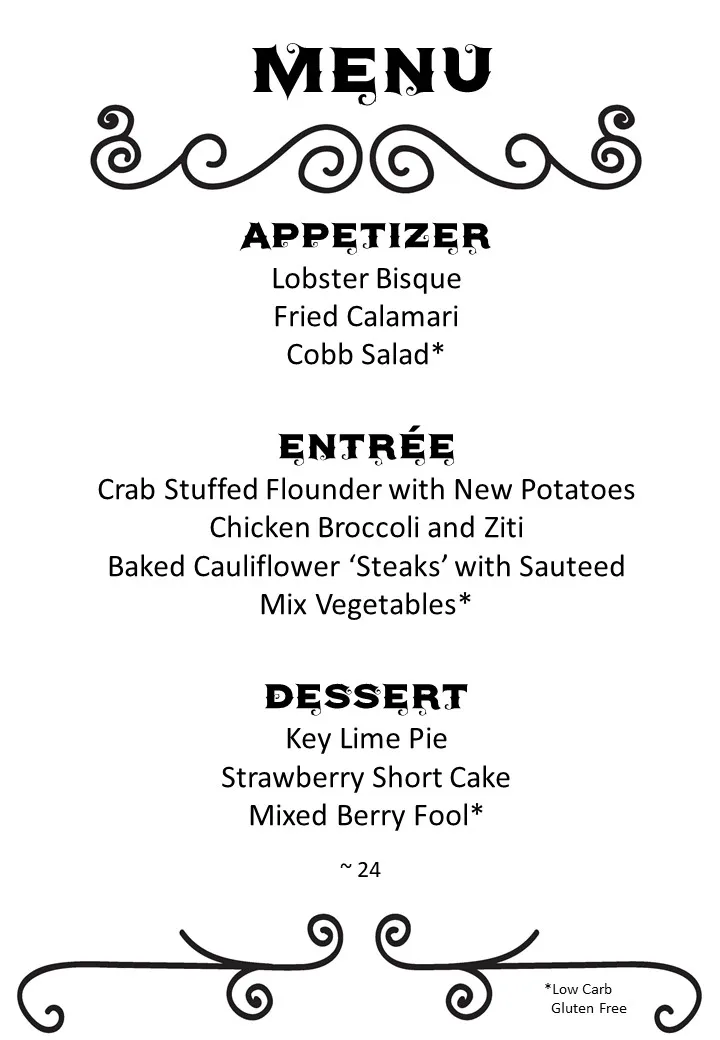In the vibrant world of culinary experiences, the menu stands as the gateway to gastronomic delights. It’s the first encounter a diner has with a restaurant’s offerings, setting the tone for the entire dining experience. But did you know that there isn’t just one type of restaurant menu? In fact, there are Different Types of Restaurant Menus, each with its own unique characteristics and advantages. Let’s delve into the diverse landscape of restaurant menus to help you discern which one might be the perfect fit for your dining establishment.
Static Menus: A Timeless Classic
Static menus are perhaps the most common type you’ll encounter in the restaurant industry. As the name suggests, these menus remain fixed, offering the same selection of dishes day in and day out. This consistency appeals to diners seeking familiarity and reliability in their dining experience. Static menus are ideal for restaurants with staple dishes that are always in demand, providing a sense of tradition and continuity.

A La Carte Menus: Customized Culinary Experiences
For those who crave variety and customization, a la carte menus are the epitome of culinary freedom. In this format, each dish is listed separately with its own price, allowing diners to mix and match according to their preferences. A la carte menus empower patrons to create their own dining adventure, selecting dishes that cater to their individual tastes and dietary requirements. This flexibility makes a la carte menus a popular choice for upscale restaurants and fine dining establishments.
Table d’Hôte Menus: The Chef’s Showcase
In contrast to a la carte menus, table d’hôte menus offer a curated selection of dishes presented as a complete meal at a fixed price. Also known as prix fixe menus, these culinary journeys are carefully crafted by the chef to showcase the restaurant’s signature dishes and seasonal specialties. Table d’hôte menus provide diners with a curated dining experience, guiding them through a sequence of courses designed to tantalize the taste buds and ignite the senses.

Cycle Menus: Embracing Seasonal Flavors
Cycle menus are designed to rotate on a predetermined schedule, offering diners a fresh selection of dishes that change regularly. These menus often follow a weekly, monthly, or seasonal cycle, allowing restaurants to capitalize on the availability of seasonal ingredients and culinary trends. Cycle menus are particularly well-suited for farm-to-table restaurants and establishments that prioritize sustainability and local sourcing.
Read Also :- Boost Your Restaurant Sales with These Menu Optimization Tips
Menu Engineering: The Secret to a Profitable Restaurant Menu
Du Jour Menus: Seizing the Moment
For restaurants that thrive on spontaneity and creativity, du jour menus are the perfect platform for culinary experimentation. Also known as daily specials, these menus feature dishes that are freshly prepared each day, showcasing the chef’s creativity and the restaurant’s commitment to innovation. Du jour menus inject an element of excitement and intrigue into the dining experience, enticing diners with the promise of unique and ephemeral culinary creations.
Conclusion: Finding Your Menu Identity
As you embark on the journey of selecting the perfect menu for your restaurant, it’s essential to consider your culinary vision, target audience, and operational capabilities. Whether you opt for the timeless elegance of a static menu, the customizable allure of a la carte, or the curated experience of a table d’hôte, each type of menu offers its own distinct advantages and opportunities for culinary expression. By carefully weighing your options and aligning your menu with your restaurant’s unique identity, you can create a dining experience that delights and captivates your guests, ensuring they return time and time again to indulge in your culinary creations.





